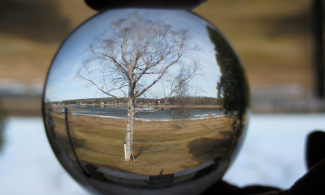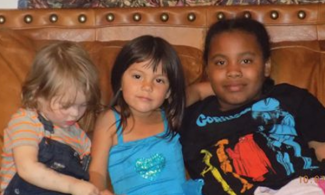Uncommon Vision: The Life and Times of John Howard Griffin
a documentary by Morgan Atkinson
Copy and paste this link to the official press release about this documentary,
A few weeks ago when it was still piercing hot outside, I visited Roberto Bonazzi, a friend of mine in San Antonio. Roberto is a writer, publisher, poet, music lover, and the executor of John Howard Griffin?s literary estate. Griffin, who was white, is the author of the extraordinary book, Black Like Me, in which it tells the story of successfully posing as a "negro" in the South in the early 60s.
Roberto has this wonderful studio where he writes and reflects. It is also where he occasionally gathers a few friends for a good time around good conversation. My visit the previous summer turned out to be a rather momentous personal experience as our discussion opened me up to the life and work of Thomas Merton. Merton was a Trappist monk, prolific writer, political activist, and one of the lead builders of bridges between Western and Eastern mysticism.
Griffin and Merton were great friends as well as fellow travelers of political and spiritual paths. Our discussion went deeply into these matters because Merton and Griffin kept bearing down on me from two large, powerful photographs, driving me to find out more and more.
On my way for another visit this summer I kept wondering if there would be a second act from these spirits. I also kept lowering my expectations of this happening. But there was a second act, a viewing of a rough cut of a documentary video of John Howard Griffin's life built around the writing and the impact of Black Like Me.
The way Morgan Atkinson structures the video is powerful: opening with the "Black Like Me" event--the book being published and its immediate impact--then tracing Griffin?s life so that it returned to that pivotal event in the history of the civil rights movement. As Atkinson tells the story of Griffin?s life, his life-long troubles with his vision comes more and more to the foreground as those problems, one, eventually lead to his becoming almost totally blind, and two, regaining his sight suddenly and inexplicably years later.
Griffin blackened himself and went through the South as a "negro: several years after he regained his sight. In reviewing Griffin's experience and the book he wrote, Atkinson brings to life the poignant irony of a blind man returning to the land of vision to show how those like you and me with normal, take-it-for-granted vision can and do manipulate our vision to see what we want and are conditioned to see without seeing that that is what we are doing. And that we do this regardless of our race, color, culture, gender, sexual orientation, etc.
This is subtle but powerful stuff, and Atkinson does a great job with it.
As for my personal journeying, I will be delving into the life and works of this rather amazing Griffin over the next year. And I will be wondering if he and Merton have something else in store for me on my next visit to Roberto?s studio. Or, is it a collective's studio?




Add new comment